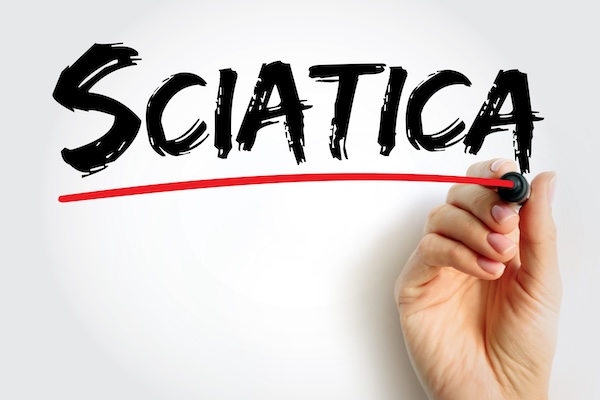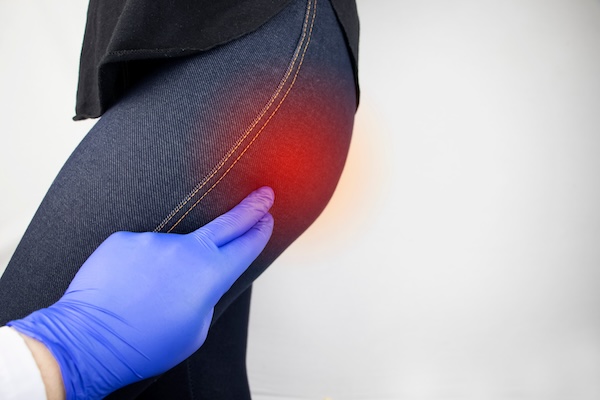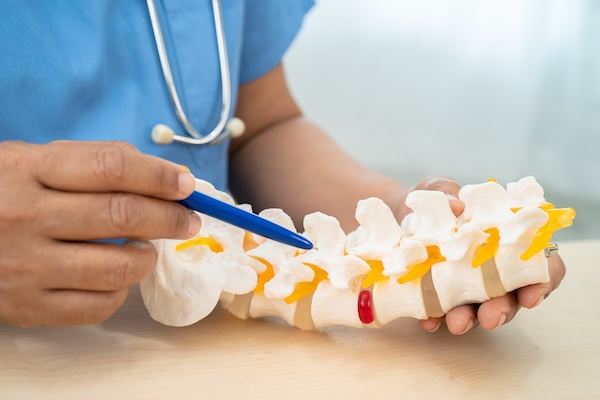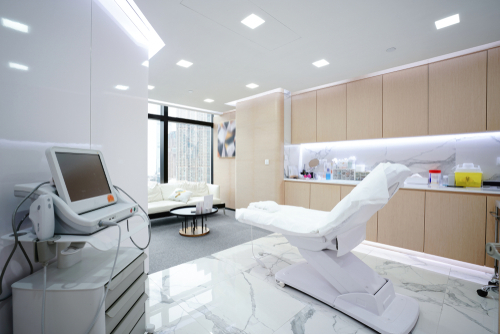Sciatica Pain: Causes, Treatment, and Relief
Sciatica pain refers to discomfort that radiates along the path of the sciatic nerve, which runs from the lower back through the hips, buttocks, and down each leg. Typically, sciatica pain affects only one side of the body and can vary from mild to debilitating. Understanding the causes, treatment options, and steps for relief is essential for those suffering from this common form of lower back pain.
What Causes Sciatica Pain?
Sciatica is often caused by conditions that irritate the sciatic nerve. The most common causes of sciatica pain include:
- Herniated discs: When a disc in the lower spine bulges or ruptures, it can compress the sciatic nerve, causing pain to radiate down the leg.
- Degenerative disc disease: Age-related wear and tear on the discs between the vertebrae can lead to nerve compression and sciatica.
- Spinal stenosis: Narrowing of the spinal canal can put pressure on the sciatic nerve, causing pain and discomfort in the lower back and legs.
- Spondylolisthesis: A condition where one vertebra slips out of place, compressing the sciatic nerve.
- Piriformis syndrome: When the piriformis muscle in the buttocks spasms or tightens, it can compress the sciatic nerve, leading to pain and numbness.
- Trauma or injury: Accidents, falls, or other injuries to the lower back can damage the spine or surrounding tissues, leading to sciatica.
Symptoms of Sciatica
The symptoms of sciatica pain can vary in intensity and location, but they often include:
- Sharp pain radiating from the lower back, through the buttocks, and down the leg.
- Numbness or tingling in the leg or foot.
- Weakness in the affected leg.
- Pain that worsens with prolonged sitting or standing.
- Shooting pain during sudden movements like coughing or sneezing.
Diagnosing Sciatica
At Georgia Spine & Orthopaedics, diagnosing sciatica pain begins with a comprehensive physical examination to assess symptoms and determine the underlying cause of the nerve compression. Our team may recommend diagnostic imaging, such as X-rays, MRI scans, or CT scans, to pinpoint the exact location of the nerve compression and assess the severity of the condition. Proper diagnosis is crucial in developing an effective treatment plan tailored to your specific needs.
Georgia Spine & Orthopaedics’ Approach to Treating Sciatica Pain
At Georgia Spine & Orthopaedics, we offer a comprehensive and patient-centered approach to treating sciatica pain, tailored to each individual’s needs. Our goal is to not only relieve the immediate discomfort but to address the root causes of sciatica and provide long-term solutions for preventing recurrence.
Sciatica pain can result from a variety of underlying conditions, such as herniated discs, spinal stenosis, or degenerative disc disease, and our experienced orthopedic specialists use advanced diagnostics and a range of treatment options to help patients recover quickly and effectively.
Advanced Diagnostics for Accurate Sciatica Evaluation
We begin the treatment process with a thorough evaluation to understand the underlying cause of your sciatica pain. Using advanced imaging techniques such as MRI scans, X-rays, and CT scans, we can accurately assess the condition of your spine and identify any nerve compression or spinal abnormalities. This detailed diagnostic process allows us to create a customized treatment plan that addresses your specific condition and maximizes your recovery potential.
Non-Surgical Treatment Options
For most patients, non-surgical treatments can provide effective relief from sciatica pain. Our approach often includes:
- Physical Therapy: A personalized rehabilitation program focusing on exercises to strengthen the muscles supporting the spine, improve flexibility, and relieve pressure on the sciatic nerve. These exercises can include stretching routines, core stabilization techniques, and posture correction.
- Pain Management Injections: We offer epidural steroid injections and corticosteroid injections that target the inflamed areas around the sciatic nerve, helping to reduce inflammation and alleviate pain. These injections can provide long-lasting relief for patients suffering from acute or chronic sciatica.
- Chiropractic Adjustments: Chiropractic care can help restore proper alignment to the spine, reducing nerve compression and relieving pain. This hands-on treatment is especially helpful for patients dealing with misalignment issues or spinal subluxation.
- Medication Management: Over-the-counter medications, such as NSAIDs (nonsteroidal anti-inflammatory drugs), along with muscle relaxants or prescription pain relievers, may be part of your pain management plan to reduce inflammation and muscle spasms associated with sciatica.
Surgical Treatment for Severe Sciatica
When non-surgical treatments do not provide sufficient relief, or if the underlying cause of the sciatica is more severe, surgical intervention may be necessary. Our orthopedic surgeons are skilled in performing advanced, minimally invasive procedures such as:
- Microdiscectomy: This procedure involves removing the portion of a herniated disc that is pressing on the sciatic nerve, providing immediate pain relief and preventing future irritation of the nerve.
- Laminectomy: For patients with spinal stenosis, a laminectomy removes part of the vertebra to decompress the spinal canal and alleviate pressure on the sciatic nerve.
- Spinal Fusion: In cases of severe instability, spinal fusion may be recommended to stabilize the affected area of the spine and prevent further nerve compression.
Our surgical treatments are designed to minimize recovery time and maximize long-term results, allowing patients to return to their normal activities with reduced pain and improved function.
Long-Term Sciatica Relief and Prevention
At Georgia Spine & Orthopaedics, we understand that treating sciatica pain requires more than just addressing the immediate symptoms—it involves a holistic approach to long-term spinal health. We provide ongoing support through follow-up care, personalized exercise programs, and lifestyle recommendations to help prevent future episodes of sciatica. By focusing on strengthening the core muscles, maintaining proper posture, and educating patients on spine health, we aim to ensure that your recovery is complete and sustainable.
FAQs About Sciatica Pain
1. How can I relieve sciatica pain at home?
Relieving sciatica pain at home starts with a combination of rest, ice, and gentle stretching. Applying ice to the affected area for 15-20 minutes every few hours can help reduce inflammation and relieve pain. Gentle stretching exercises, especially those that target the lower back and hamstrings, can help ease pressure on the sciatic nerve. Over-the-counter pain relievers like ibuprofen or naproxen can also help manage pain. However, if pain persists for more than a few days, it’s important to consult a healthcare provider for a more comprehensive treatment plan.
2. How long does it take for sciatica to heal?
The recovery time for sciatica pain varies depending on the cause and severity of the condition. Mild cases may resolve within a few weeks with rest, physical therapy, and other non-invasive treatments. More severe cases, particularly those involving herniated discs or spinal stenosis, may require several months of treatment and rehabilitation. In cases where surgery is necessary, recovery can take several months to a year, depending on the procedure and individual factors.
3. Can sciatica go away on its own?
In some cases, sciatica pain may resolve on its own, especially if the underlying cause, such as a mild herniated disc, heals with rest and conservative care. However, more persistent cases may require medical intervention, including physical therapy, injections, or even surgery. Ignoring persistent sciatica pain can lead to chronic pain or permanent nerve damage, so it’s important to seek medical advice if symptoms don’t improve after a few weeks.
4. What are the most common causes of sciatica pain?
The most common causes of sciatica pain include herniated discs, spinal stenosis, degenerative disc disease, and spondylolisthesis. These conditions can compress the sciatic nerve, leading to pain, numbness, and weakness in the lower back and legs. Other contributing factors include piriformis syndrome, injury, and prolonged sitting, which can aggravate the sciatic nerve.
5. When should I see a doctor for sciatica pain?
You should see a doctor if your sciatica pain lasts for more than a few days, worsens over time, or is accompanied by severe symptoms such as loss of bladder or bowel control, significant weakness in the leg, or numbness. These may indicate a more serious condition, such as cauda equina syndrome, which requires immediate medical attention.
Expert Sciatica Pain Care at Georgia Spine & Orthopaedics
At Georgia Spine & Orthopaedics, we specialize in diagnosing and treating sciatica pain and other conditions that cause lower back pain. Our team of dedicated specialists offers a comprehensive range of non-surgical and surgical treatments designed to relieve pain, restore function, and prevent future episodes of sciatica.
If you’re struggling with sciatica pain, don’t wait for it to worsen—schedule an appointment with our experienced team today at 678-929-4494 and start your journey to recovery with personalized, expert care.
Whether you need physical therapy, pain management, or advanced surgical care, we are here to help you get back to living pain-free.








